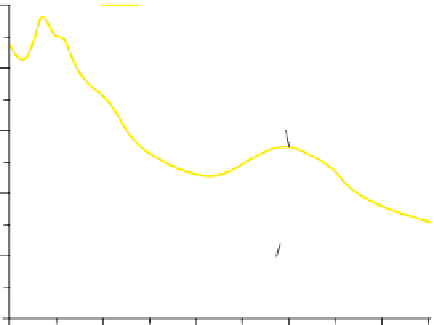Biomedical Engineering Reference
In-Depth Information
(A)
ALG
CHI
DOX
ALG-SWCNTs
CHI/ALG-
SWCNTs
DOX-CHI/ALG-
SWCNTs
237 nm
(B)
1.5
DOX-ALG-SWCNTs
DOX-CHI/ALG-SWCNTs
DOX-SWCHTs
DOX-CHI-SWCNTs
DOX
1.2
502 nm
0.9
232 nm
0.6
490 nm
0.3
0.0
200
300
400
Wavelength (nm)
500
600
FIGURE 20.6
(A) Preparation of SWNTs-DOX after inclusion of bioadhesive
polymers to enhance nanotubes dispersability in aqueous
phase. (B) UV absorption spectra of DOX formulations.
From
[27]
.
genetic materials are poorly able to cross the biological membranes, the use of viral or nonviral vec-
tors to carry the gene and internalize it into the cell is necessary. Nonviral vectors are less efficient
than viral vectors
[29]
and short-lived
[30]
; however, they are far much safer
[31,32]
. Pantarotto
and coworkers
[3]
have introduced novel functionalized SWNT-DNA complexes and reported high
DNA expressions compared with naked DNA. Generally, functionalized SWNTs have been sug-
gested as suitable nonviral carriers of macromolecules, and internalization of such macromolecules
into living cells by CNTs have been reported to take place via energy-dependent endocytosis
[33]
.
Confocal microscopy and flow cytometry have shown much greater fluorescent activity of protein
and DNA when made as conjugates with SWNTs as compared to the naked macromolecules
[33]
,
indicating that CNTs are promising vectors for gene and protein. Cai and coworkers
[8]
have intro-
duced an approach to gene delivery named “CNT spearing.” Plasmid DNA with a fluorescent protein
was immobilized onto nickel-embedded CNTs. The formulation was “speared” into Bal 17 B lym-
phoma cells using a magnetic field, which produced high transfection in the target cells. In another
study, exposure of HeLa cells to DNA attached to SWNTs at 37°C resulted in gene internaliza-









































































